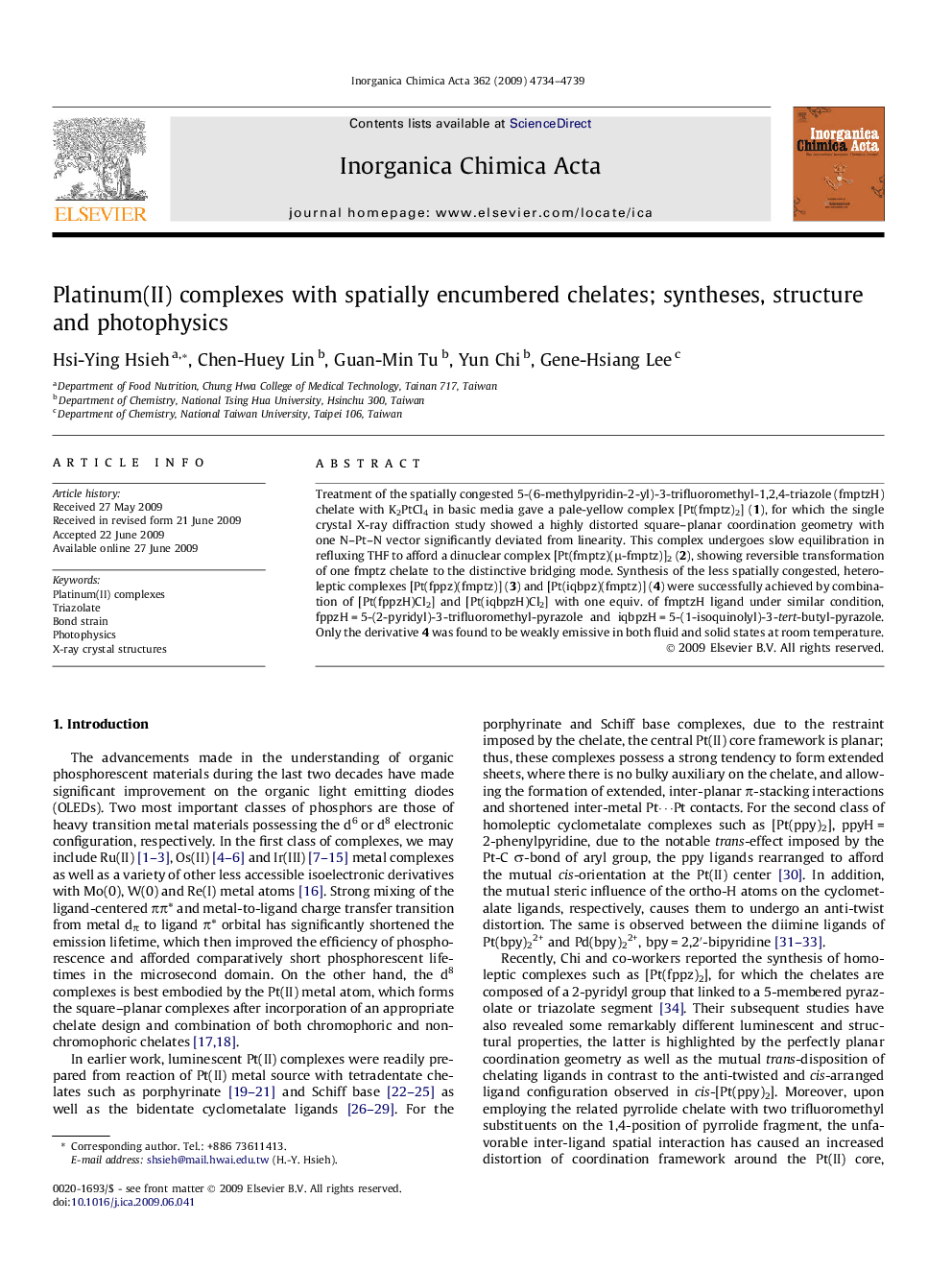| Article ID | Journal | Published Year | Pages | File Type |
|---|---|---|---|---|
| 1307005 | Inorganica Chimica Acta | 2009 | 6 Pages |
Treatment of the spatially congested 5-(6-methylpyridin-2-yl)-3-trifluoromethyl-1,2,4-triazole (fmptzH) chelate with K2PtCl4 in basic media gave a pale-yellow complex [Pt(fmptz)2] (1), for which the single crystal X-ray diffraction study showed a highly distorted square–planar coordination geometry with one N–Pt–N vector significantly deviated from linearity. This complex undergoes slow equilibration in refluxing THF to afford a dinuclear complex [Pt(fmptz)(μ-fmptz)]2 (2), showing reversible transformation of one fmptz chelate to the distinctive bridging mode. Synthesis of the less spatially congested, heteroleptic complexes [Pt(fppz)(fmptz)] (3) and [Pt(iqbpz)(fmptz)] (4) were successfully achieved by combination of [Pt(fppzH)Cl2] and [Pt(iqbpzH)Cl2] with one equiv. of fmptzH ligand under similar condition, fppzH = 5-(2-pyridyl)-3-trifluoromethyl-pyrazole and iqbpzH = 5-(1-isoquinolyl)-3-tert-butyl-pyrazole. Only the derivative 4 was found to be weakly emissive in both fluid and solid states at room temperature.
Graphical abstractHeating of either sample in refluxing THF over a time period of over 24 h gave isolation of both Pt(II) complexes in nearly equal proportion.Figure optionsDownload full-size imageDownload as PowerPoint slide
